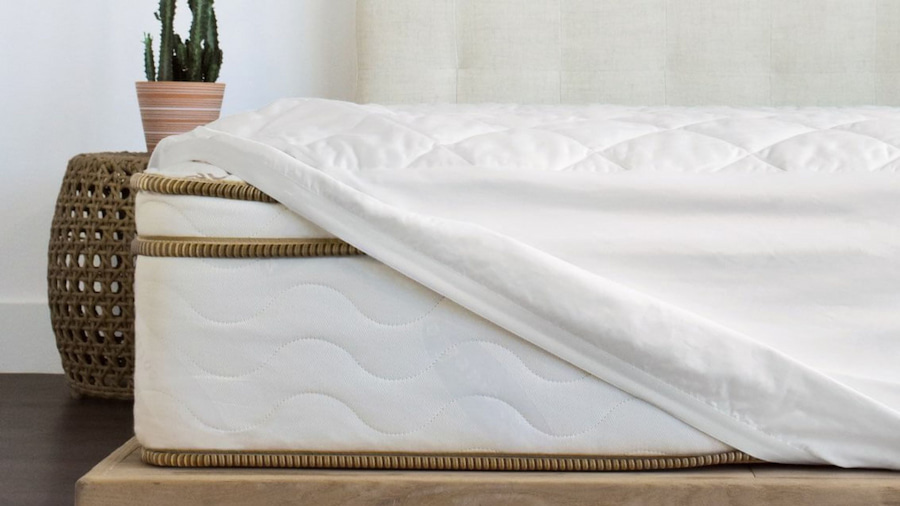When it comes to ensuring the longevity and hygiene of your mattress, a mattress protector is an essential investment. Not only does it safeguard your mattress from spills, stains, dust mites, and allergens, but it also adds an extra layer of comfort to your sleep experience. The choice of Waterproof Quilted Mattress Protector used in making a mattress protector greatly influences its effectiveness and durability.
Cotton:
Cotton is a timeless and widely favored choice for mattress protector materials. Its natural attributes make it an excellent option for enhancing sleep comfort and maintaining mattress hygiene. Cotton is prized for its exceptional softness and breathability, offering a comfortable surface for sleepers. The following characteristics define cotton mattress protectors:
Softness and Breathability: Cotton is known for its natural softness, providing a gentle touch against the skin. Its breathability allows air to circulate through the fabric, preventing heat buildup and promoting a cooler sleeping environment.
Hypoallergenic and Absorbent: Cotton is hypoallergenic, making it a suitable choice for individuals with allergies or sensitivities. It has the ability to absorb moisture efficiently, wicking away sweat and preventing it from seeping into the mattress. This absorbency also helps in preventing stains.
Comfort and Tradition: Cotton mattress protectors offer a classic feel, evoking a sense of comfort and familiarity. For those who prefer a more traditional sleeping experience, cotton protectors can provide the desired sensation.
Easy Maintenance: These protectors are relatively easy to care for. They can typically be machine-washed and dried without losing their softness or structural integrity.
Polyester:
Polyester mattress protectors are known for their durability and affordability. While they may not possess the same natural properties as cotton, advancements in technology have led to innovations that make polyester protectors a practical option:
Durability and Affordability: Polyester is a synthetic material that offers excellent durability, making it a cost-effective choice for mattress protection. It can withstand regular wear and washing without showing signs of wear and tear.
Resistance to Stains and Moisture: Polyester has inherent resistance to stains and moisture, providing a certain level of protection for your mattress. However, it may not be as effective at wicking away moisture as natural fibers like cotton.
Breathability and Comfort: While traditional polyester may not be as breathable as other materials, newer moisture-wicking and cooling polyester blends have been developed to enhance comfort by allowing better airflow and heat dissipation.
Terry Cloth:
Terry cloth mattress protectors are crafted from a fabric with loops that create a soft and absorbent texture. These protectors are known for their absorbency and comfort, but they might have some limitations when it comes to breathability:
Absorbent and Soft: Terry cloth protectors excel in absorbing liquids, making them effective at preventing spills and stains from reaching the mattress. The looped texture provides a plush and cozy surface.
Limited Breathability: Due to the dense and absorbent nature of terry cloth, these protectors may not be as breathable as some other materials. This could lead to a slightly warmer sleep environment, especially for individuals who tend to sleep hot.
Bamboo:
Bamboo-based mattress protectors have gained popularity in recent years due to their eco-friendly properties and unique advantages:
Eco-Friendly and Hypoallergenic: Bamboo is a sustainable and renewable resource, making it an eco-conscious choice. It is naturally hypoallergenic and resistant to allergens, making it ideal for those with sensitivities.
Antimicrobial and Moisture-Wicking: Bamboo possesses natural antimicrobial properties, discouraging the growth of bacteria and odors. Its excellent moisture-wicking capabilities keep you dry by absorbing and evaporating moisture quickly.
Temperature Regulation: Bamboo mattress protectors are known for their temperature-regulating properties. They help create a cooler sleep surface by effectively managing heat and promoting better airflow.
Factors to Consider When Choosing Materials:
Comfort: Consider the level of comfort the material offers. Some people prefer the softness of cotton, while others may opt for the moisture-wicking capabilities of bamboo or microfiber.
Breathability: Choose a material that promotes airflow to prevent heat retention during sleep. Materials like bamboo and wool are know for their breathability.
Allergies: If you have allergies, opt for hypoallergenic materials like bamboo, wool, or cotton.
Waterproofing: If protection against spills and stains is a priority, consider a protector with a waterproof layer. Look for options that balance waterproofing with breathability.
Durability: Evaluate the durability of the material to ensure your protector lasts over time. Polyester and microfiber are know for their durability.
Conclusion:
Selecting the right material for your mattress protector is crucial for enhancing your sleep quality, protecting your mattress investment, and ensuring a hygienic sleeping environment. Consider your personal preferences, comfort needs, and any specific requirements like waterproofing or allergen resistance when making your decision.
Whether you choose the natural softness of cotton, the cooling properties of bamboo, or the durability of polyester, the right mattress protector material can significantly contribute to your overall sleep experience.
Also, read this article:
The best bed frame for heavy person ultimate guide
How Easy Care Bedding Make Life Simpler?
6 Simple Steps to Wash Bedsheets. An Ultimate Guide


